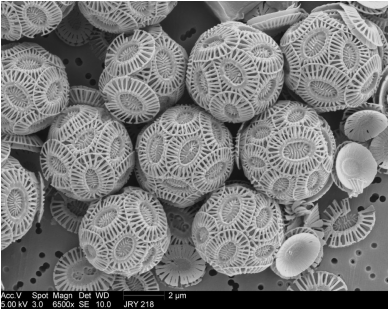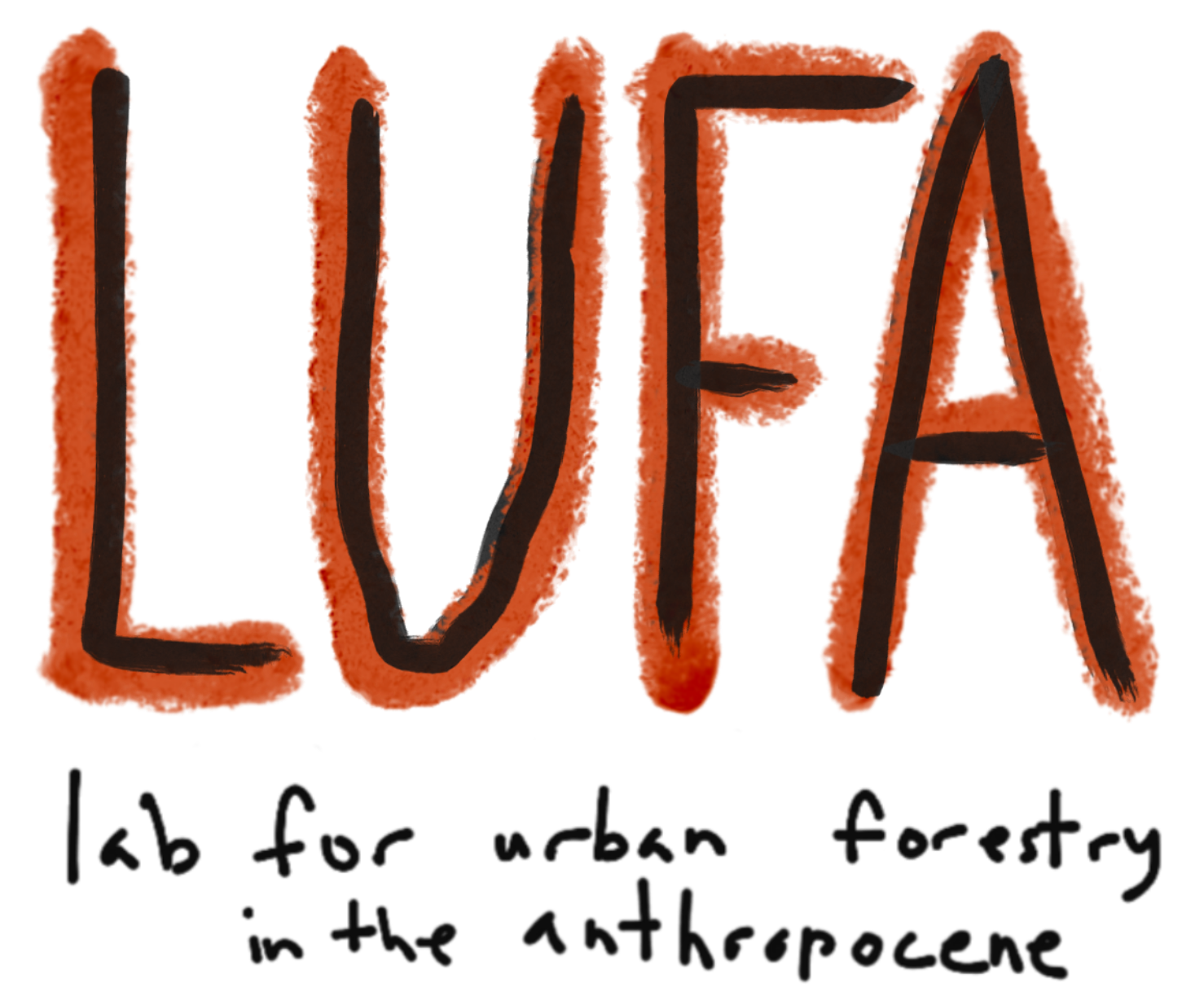BY Maddy JanakisOcean acidification could be called 'Global warming’s evil twin. Humans have put millions upon millions of tons of carbon into the atmosphere since the beginning of the Industrial Revolution. While the atmosphere has changed drastically, the ocean has taken on the most of the burden, acting as a carbon sink to the earth. As the ocean absorbs more carbon it creates a chemical reaction, becoming more acidic. This is happening at a more rapid than any other time in the last 65 million years. Overall the ocean has become 30% more acidic, with 15% of change happening since 1990 (Vince 2014, 164). If these numbers sound alarming, they should. These changes are so fast and drastic that scientists aren’t entirely sure what will happen to our oceans.  Coccolithophores (Image source: PEACE, University of Liege) Coccolithophores (Image source: PEACE, University of Liege) Scientists don’t know if there is a tipping point for the oceans where they’ll be unable to return to a sustainable environment for marine life. Oceans are in big trouble due to more than just carbon. As polar glaciers melt, less light is reflected back into space, while more heat is absorbed into the water. Because of the physical properties of water, as it gets warmer, the water expands, causing global sea levels to rise. This leads to more frequent flooding and hurricanes. Oil, plastic and other human-made synthetic materials crowd the water and end up in the bodies of marine life. While ocean acidification is a major threat, it is magnified when combined with these other environmental concerns. Oceans have become more acidic by 30% in the last 200 years, with projections estimating that if the current rate of carbon emissions continues the oceans may be 150% more acidic by the end of this century. Scientists theorize that even if carbon emissions were halted today the oceans would continue to absorb carbon for the next few decades. The ocean is changing too fast for animals to keep up evolutionary. Instead they are becoming endangered, sick or even extinct. Marine animals who build shells rely on the saturation of aragonite saturation in the sea-water to build them. A large variety of animals build shells using this process including snails, clams, and most other mollusks. In simple wording: if the water is too acidic it’s much harder for animals to create their calcium carbonate shells. They struggle to form them and suffer negative effects as they are unable to grow and thrive. The pre-industrial level of oceanic aragonite saturation was 3.44, now it is 2.9. Marine biologists estimate that if it drops below 2.75 animals aren’t able to grow or thrive. If it decreases all the way down to 1 then they are unable to form their shells at all. The disappearance of these creatures will create a huge impact, changing or collapsing the ocean ecosystems. Ocean acidification causes serious depletion of coral reefs through bleaching as well as damage to the animals who live there. The small organisms who create coral reefs are also drastically affected by the change in acidity in their ability to build the coral structures. Coral reefs make up a huge part of ocean ecosystems, with about 25% of all marine species dependent of the reefs for a variety of reasons: raising young, feeding and as a home habitat. Coral reefs are the 'rainforests of the oceans' with more biodiversity than any other habitat in the ocean. To make matters even worse as corals break down they stop absorbing carbon and the carbon they had previously captured is re-released into the environment. One small creature that’s been affected by the acidic water is the Coccolithophores. These little organisms with a big name (picture at right) are single-celled shelled plants that play an important role in oceans. A close cousin to phytoplankton, Coccolithophores disperse sunlight in seawater, they’re what gives tropical waters the bright teal color that are so commonly associated with vacation resorts. By lightening the surface of oceans they reflect sunlight back into space instead of absorbing the heat. Animals that eat phytoplankton can also thrive on Coccolithophores. The loss of these one-cell plants could destroy food-chains from the base all the way up to whales and large filter-feeders. Ocean acidification extends beyond just small shelled animals. Recent studies have shown that large fish and mammals are also affected. Acidification alters the formation of bones- particularly of fragile and delicate ear bones. These bones are used to navigate, sense speed and direction. Sound also travels differently in more acidic water; research shows that sound can travel 75% further in water that is 30% more acidic, leading to noisier oceans. This disruption affects fishes’ ability to hunt and communicate as well as find their way through the oceans. Scientists are also finding that the neurotransmitters of fish are also changed, causing unusual behavior. The food chain isn’t the only challenge that marine life is facing. It’s difficult to quantify and understand what all these changes in the ocean will look like at the end of the century. Perhaps the ocean will be full of jellyfish- a species that seems to thrive in the more acidic conditions or huge blooms of algae. Or maybe, the Great Barrier Reef will look more like an underwater dessert than a bustling marine metropolis. It is known that many island or coastal communities depend on fish for food as a major staple in their diet currently. Families may face mass famine, unemployment, and a future of poverty. The crisis the ocean faces isn’t just the concern of ocean species. With 70% of the Earth’s surface is covered by ocean. This 70% is now seriously threatened. It’s hard to understand exactly what this future world may look like but one fact is evident - change has to happen and rapidly in order to save our oceans before it is too late. Additional Resources Vince, Gaia. (2014). Adventures in the Anthropocene. Milkweed Editions, Minneapolis, MN.
0 Comments
Your comment will be posted after it is approved.
Leave a Reply. |
AuthorsStudents in Jess' ENV 151 Introduction to Sustainability write blog posts on a sustainability-related topic of their choice. ArchivesCategories
All
|
1110 West Belden Avenue Chicago Illinois 60614
|
Site last updated: August 9, 2018.


